Chinese painting, as one of the Chinese nation’s treasures, occupies a pivotal position in Chinese traditional culture and is highly praised worldwide. Over the past thousands of years, countless outstanding painters have been born in China, leaving behind countless exquisite paintings, leaving a strong mark in the history of Chinese and world art.
In ancient times, Chinese painting was called “Danqing”, which mainly refers to scroll paintings painted on silk, rice paper, and silk and mounted. The traditional painting form of the Han nationality is to use a brush dipped in water, ink, and color to paint on silk or paper. This type of painting is called “Chinese painting”, or “Guohua” for short. Chinese paintings are mainly divided into three categories: figures, flowers and birds, and landscapes. The reason for these three categories is actually a philosophical thinking sublimated by art. The combination of the three constitutes the whole of the universe, complementing each other, and is the true meaning of art as art. Today we will learn about the top ten famous paintings handed down from ancient times in China.
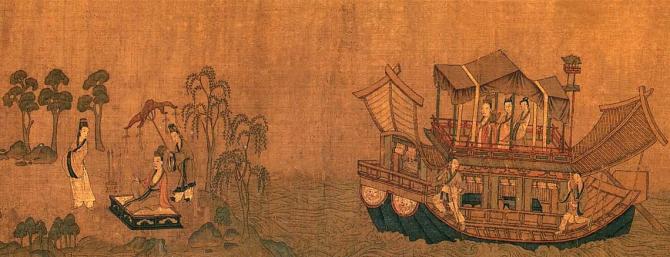
1. The Goddess of the Luo River, created by Gu Kaizhi, a famous painter in the Eastern Jin Dynasty, is 27.1 cm long and 572.8 cm wide. It is a long scroll similar to a comic strip and is composed of multiple storylines, but the original scroll is now lost. The Goddess of the Luo River pioneered the long scroll of traditional Chinese painting and is known as the “ancestor of Chinese painting.” Its handed down works are mainly four copies from the Song Dynasty, which are collected in the Palace Museum in Beijing (two pieces), Liaoning Provincial Museum and the Freer Gallery of Art in the United States. Some time ago, the “National Treasure” program introduced the “Goddess of the Luo River” in Liaoning Museum. The story is sincere and moving.
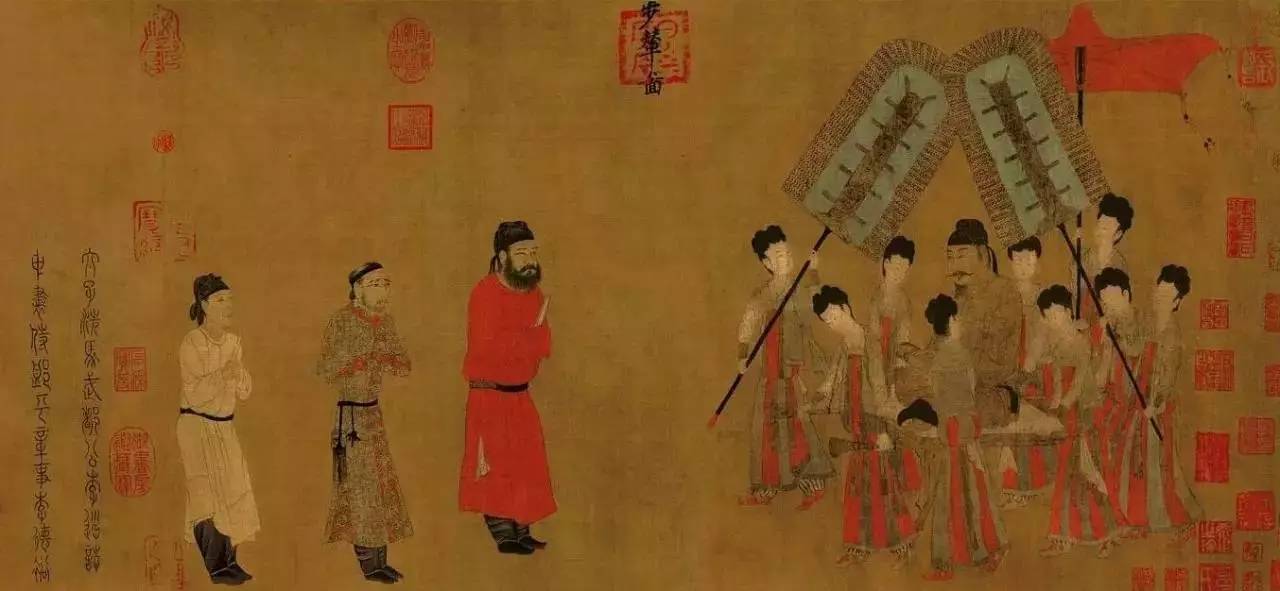
2. The Procession of Princess Wencheng is one of the masterpieces of Yan Liben, a famous painter in the Tang Dynasty. It is 38.5 cm in height and 129.6 cm in width. It is now in the collection of the Palace Museum. The content reflects the story of Songtsen Gampo marrying Princess Wencheng into Tibet. The work has elegant and gorgeous colors, smooth and round lines, and a varied composition. It is a representative work of Tang Dynasty painting. It has precious historical and artistic value.

3.The “Tang Palace Ladies” depicts the portraits of various beautiful women in the Tang Dynasty, with the most outstanding including Zhang Xuan’s “Spring Tour of the Lady of Guo”, “Dancing and Training”, Zhou Fang’s “Hairpin Flowers Ladies”, “Fan waving Ladies”, and the late Tang Dynasty’s “Palace Music”. The main artistic feature of Tang Dynasty’s painting of beautiful women is its portrayal of the lifestyle of aristocratic women in the Tang Dynasty. The Tang Dynasty, as the most glorious era of feudal society, was also a prosperous period for the painting of beautiful women. At that time, the painting of beautiful women was known for its dignified, gorgeous, and elegant style. The painting of Tang Palace Ladies provides valuable supporting materials for later generations to study the social life of Tang Dynasty aristocrats.

4. Han Huang’s “Five Oxen”, as one of the few authentic Tang Dynasty paper and silk paintings, is the oldest existing Chinese paper painting and can be called a “national treasure”. It is now in the Palace Museum in Beijing. “Five Oxen” is 20.8 cm long and 139.8 cm wide, depicting five oxen in different forms, which is also the highest level of oxen painting in the Tang Dynasty. The painting was lost abroad when the Eight-Power Allied Forces looted Beijing in 1900. It was not until the 1950s that Premier Zhou Enlai spent 60,000 Hong Kong dollars to buy it back in Hong Kong. On January 1, 2013, nine experts from the National Humanities and History jointly launched “Five Oxen” and rated it as one of the nine national treasures.

5. “Night Banquet of Han Xizai” was created by Gu Hongzhong, a painter of the Southern Tang Dynasty in the Five Dynasties. It is also the only work of Gu Hongzhong handed down to the present day. The existing Song copy is 28.7 cm wide and 335.5 cm long, and is now in the collection of the Palace Museum in Beijing. It depicts the scene of a night banquet and singing and enjoying at the home of official Han Xizai. This painting depicts the complete process of a night banquet in Han’s mansion, namely the five scenes of pipa performance, watching dance, resting during the banquet, playing the flute, and seeing off the guests. The author used amazing observation skills and a deep understanding of the fate and thoughts of the protagonist to create this wonderful work that is worth our eternal aftertaste.
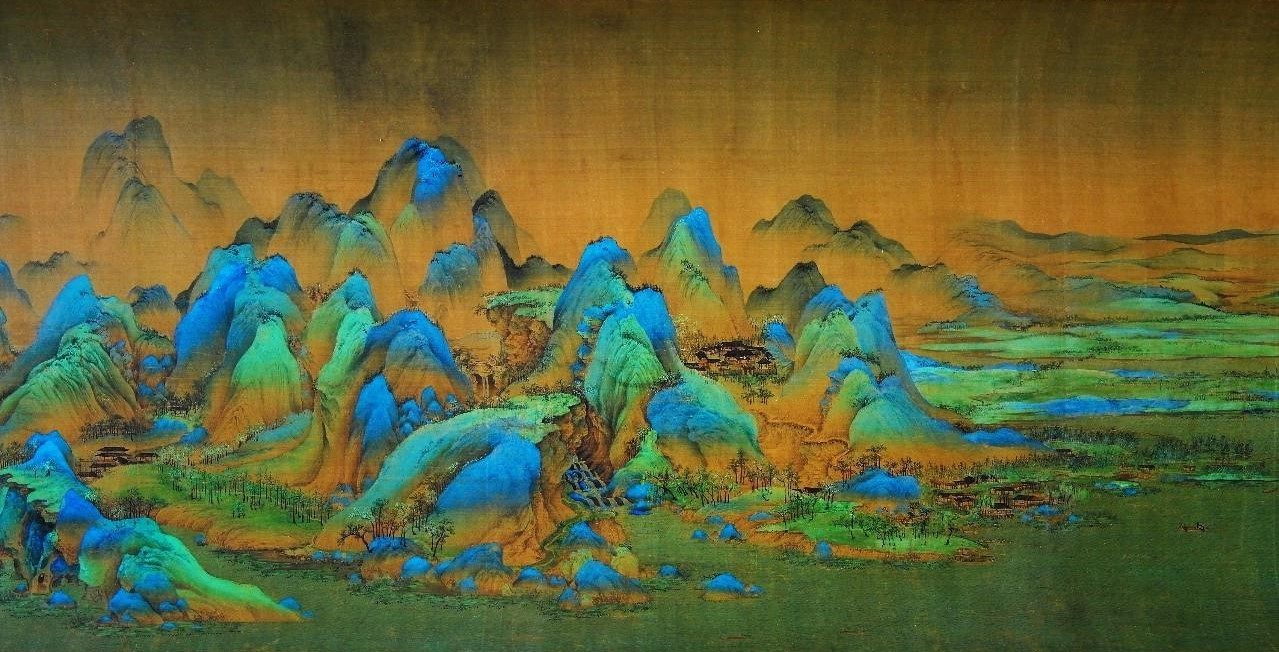
6. A Thousand Miles of Rivers and Mountains was created when Wang Ximeng was 18 years old. It is also the only work handed down from generation to generation and is now in the Palace Museum. The painting is a large green-blue silk painting, 51.5 cm in length and 1191.5 cm in width, with a vast and extraordinary momentum. The upper layer of the whole scroll is full of peaks and ridges, and the complex forests, villages, boats, bridges, pavilions, and various figures in the picture are arranged in an orderly manner. The mountains and rocks in the painting are first outlined with ink, and then painted with green and heavy colors, and the tops of the mountains are dyed with stone blue and stone green to show the green mountains. The rivers are outlined with water ripples, which form a contrast with the boneless colors. The whole picture is both magnificent and delicate, and it is a masterpiece of green landscape painting. Although it is a pity that Wang Ximeng died young in his twenties, just one painting of A Thousand Miles of Rivers and Mountains is enough to make him famous forever.

7. Along the River During the Qingming Festival, 24.8 cm wide and 528.7 cm long, is the only masterpiece of the Northern Song Dynasty painter Zhang Zeduan. It is a first-class national treasure and is now in the Palace Museum. Along the River During the Qingming Festival is one of the most famous works in the history of Chinese painting. It is not only of high artistic level, but also has many interesting stories around it. This painting depicts the prosperous scene of Bianjing during the Qingming Festival. It is a witness to the prosperity of Bianjing at that time and a portrayal of the urban economy of the Northern Song Dynasty. Through this painting, we understand the urban appearance of the Northern Song Dynasty and the lives of people from all walks of life at that time. Along the River During the Qingming Festival has extremely high historical value.

8. Dwelling in the Fuchun Mountains is 33 cm in length and 636.9 cm in width. It is known as the “Lanting in Painting” and is a national treasure. The painting was created by Huang Gongwang for his junior apprentice Zheng Chu and was completed in 1350. It changed hands several times and was burned in the Shunzhi period of the Qing Dynasty. It was broken into two parts. The first half was mounted separately and renamed “Remaining Mountain”. It is now in the Zhejiang Provincial Museum and is known as the “treasure of the museum”. The second half, the “Useless Master Scroll”, is now in the National Palace Museum in Taipei. In June 2011, the two parts were exhibited together for the first time in the National Palace Museum in Taipei.
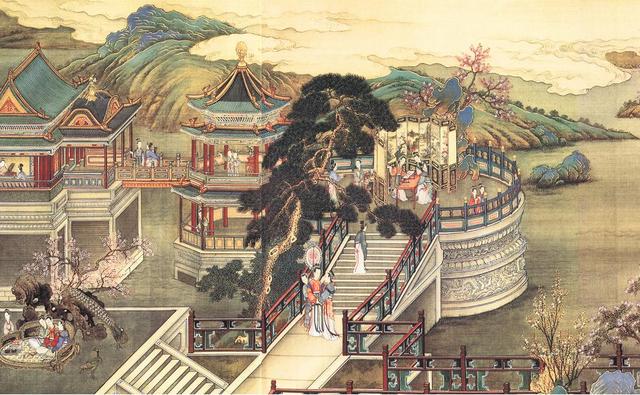
9. “Spring Dawn in the Han Palace” is the first long scroll of Chinese heavy-color ladies, 30.6 cm in length and 574.1 cm in width, mainly depicting the life of concubines in the palace. The author is Qiu Ying, one of the four great masters of the Ming Dynasty. He, Shen Zhou, Wen Zhengming and Tang Yin are collectively known as the “Four Masters of the Ming Dynasty” and the “Four Heroes of Tianmen”. This work is not only Qiu Ying’s proudest work, but also unique and leading in Chinese heavy-color ladies’ paintings.
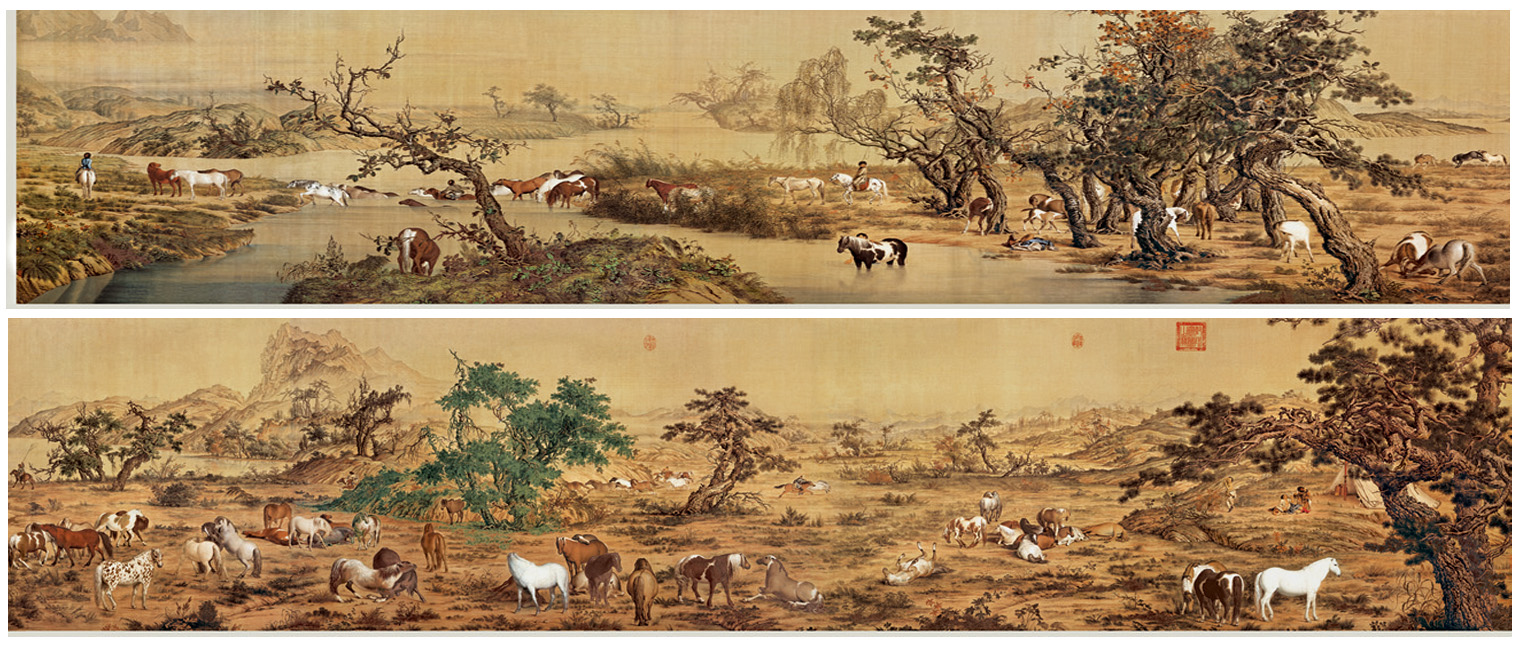
10. “One Hundred Horses” is a work by Italian Qing Dynasty court painter Lang Shining, who is also the only foreign artist among the famous Chinese paintings handed down from generation to generation. The painting is 102 cm long and 813 cm wide, and depicts 100 horses in various postures, standing, running, kneeling, or lying, which can be said to be a complete collection of all the postures of horses. The painting is now in the National Palace Museum in Taipei.
